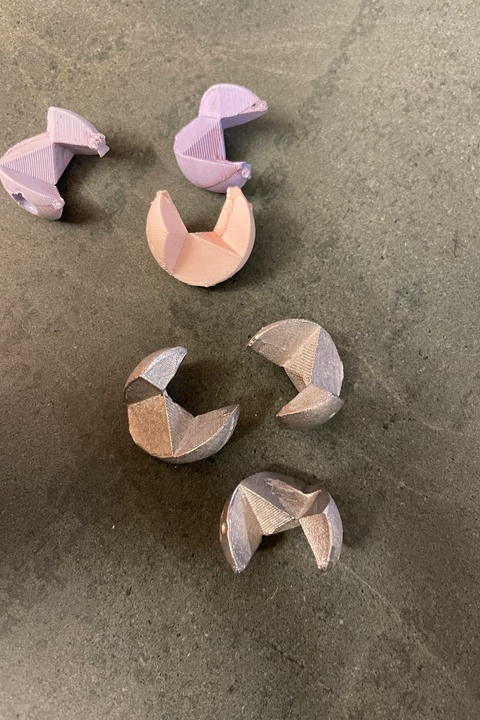Making the moulds for casting was an extremely insightful process and it taught me to think about large scale manufacturing and notice small details in everyday objects which reveal how they were created.
The original casting process was a little challenging due to the complicated contours of the Venn Puzzle pieces. It meant adding additional sprues while also being careful about their placement so that the sides which interacted with each other remained as smooth as possible (there is a very narrow margin of error in how the pieces fit together for the puzzle to work).
Figuring out the mould took a couple of tries because the volume of the object being cast resulted in a lot of air needing to be pushed out, so we had to widen those paths in the mould manually using an exacto knife. After that it was relatively smooth sailing!
For the surfaces that would still be exposed to air when the puzzle was complete, I opted to go for an old-timey mystery from Grandpa’s chest in the attic vibe instead of the clean lines of the 3D printer. This involved adding more than the recommended amount of baking powder, which is used to ensure no water is present in the mould to prevent explosions (a very cool fact that increased the stakes dramatically), and not shaking it all out leading to a granular texture which makes the pieces more fun.
I really loved pouring the molten metal and watching it cool, it was an amazing experience. Plus, I saved 25 dollars by not buying this online.
Here it is, solved:

